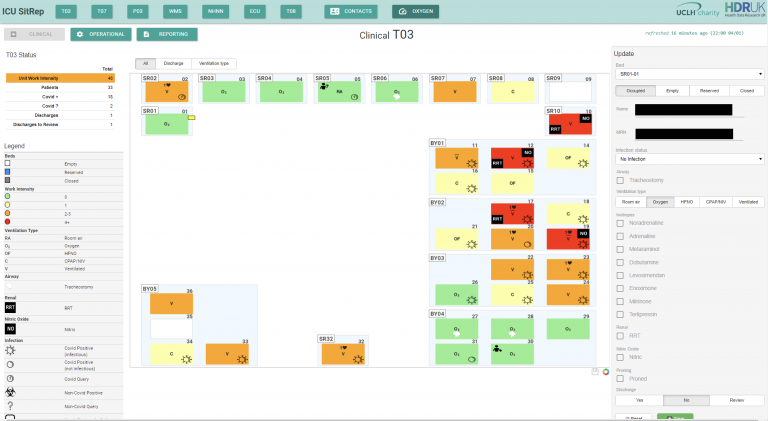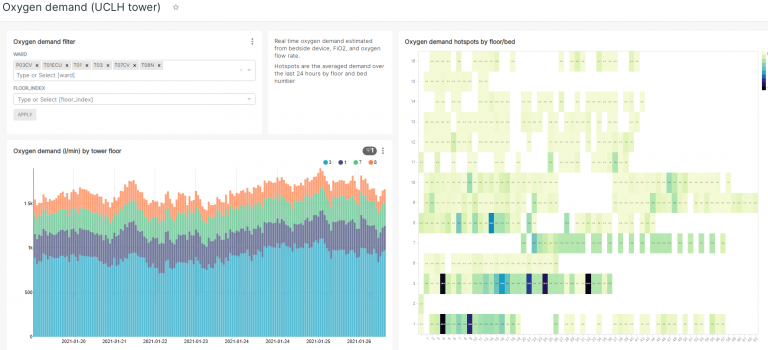Electronic Health Records at your Fingertips
Among other things, the emergence of Artificial Intelligence means we need live health record data suitable for use in both research and clinical applications.

10 November 2022
Background
Hospital data come in many formats and are recorded continuously in a variety of locations. For reporting purposes, “front-end” databases are used, which are updated with consolidated data in nightly and automated batch downloads. While this data can be used for research, the nightly consolidation process means that the front-end databases are always lagging behind current records and may not exactly match events as they occur, thereby preventing any real-time application of the data.
In 2018 several ICU (intensive care units) consultants and UCLH (UCL Hospitals) Digital Services acquired funding to develop a pipeline, which aims to facilitate real-time data access for research and clinical dashboards. We (ARC's Research Software Development Group) had already been involved in processing various data formats within the hospital and were an obvious technical collaborator in this new project.
What we did
We began by investigating data sources and designing a pipeline to process data. However, in 2019, many of the hospital systems were replaced by a more centralised system, which required us to rethink our approach. Out of this EMAP (Experimental Medicine Application Platform) was born. Employing the largest team of developers ever used within the group (5+), we developed a set of Java-based microservices that could be linked together to:
- process data from live feeds
- supplement this with non-live data from static databases
- process data into a common custom format
- queue and check that processing has happened
- and feed into the ‘star’ database.
Applying software best practices, we have tested the system on a basic level with unit tests for each service and on system-wide level by creating and testing the flow of dummy messages. In addition, we created a ‘live’ database to find any potential discrepancies with the actual hospital databases. This step became crucial during the initial stages of the pandemic.
Several clinical data-based dashboards and other artificial intelligence-based projects currently use and benefit from the existence of EMAP. It has been officially adopted by the hospital Digital Healthcare Technology Department and is now offered as a resource to researchers requesting ethics approval to use hospital data.
ICU SitRep dashboard showing beds:

Citrix viewer showing oxygen demand for the UCLH Tower:

EMAP has transformed health data science in the acute setting. It allows us to bring computational science to the bedside right inside the hospital as we've been able to build, trial and deploy tools and algorithms for patient and health system benefit with an immediate feedback loop." – Grateful EMAP user
And we're not finished yet ...
The project is ongoing, and we continue to work with researchers to access and provide the data they need. This enables them to perform a variety of tasks, ranging from establishing how much oxygen is being used in the hospital, to comparing chest X-rays with written radiology reports.
Links
- Working with the Research Software Development Group
- UCL Hospitals Critical Care
- Case study: Bigger data, better health care
 Close
Close

